Repetetive, Solo Exhibtion, Nicoletti Contemporary, London, UK, 2024
![]()
![]()
![]()
![]()
![]()
![]()
![]()
![]()
![]()
![]()
![]()
![]()
![]()
![]()
![]()
![]()
![]()
![]()
![]()
![]()
![]()
![]()
![]()
![]()
![]()
![]()
![]()
![]()
![]()
![]()
![]()
![]()
![]()
![]()
![]()
![]()
![]()
![]()
![]()
![]()
![]()
Analysing Bruce Nauman’s performance Slow Angle Walk (Beckett Walk, 1965), art historian Kathryn Chiong reminds us that ‘for a knock to be a knock, the sound must normally recur, the second proving that the first one was not just the banging of a branch but the work of communication’. Russian linguist Roman Jakobson also situates this operation in verbal behaviour, in which duplication signals that ‘the uttered sounds do not represent a babble, but a senseful, semantic entity’.
In Repetitive, her debut solo exhibition in the UK, London-based, German artist Ana Viktoria Dzinic presents a series of photographic prints and installations in which she uses repetition as a tool to investigate contemporary methods of communication and image production, analysing the relationship between processes of subjectivity formation and current modes of fabrication, circulation and consumption of technical images. Exploring tensions between the copy and the original, the authentic and the counterfeited, the exhibition begins with Even the most critical bees stop and smell the roses (2024), which was first shown in 2022, but this time downsized to a 1:25 maquette of the nicoletti gallery space, compremised of all the installation elements directed by Regieanweisungen (Scripts) allowing dzinic to use the object as representational models or signs, in this case: four chairs covered in the blackest black, coat hanegrs filled with one black item donated by each gallery member, 15 images of the Propaganda and decoration series ( 2022- ) printed on hane muehle german etching, and a soudtrack composed of 25 pinao cover songs played with devices made bfore 2007 ( when the first iPhone was released and the left over paint and tools which lead to the making of the objects.
Including a protocol to reproduce the work in different contexts, Dzinic’s installation also contains some of the images that are copied, resized and disseminated in Repetitive, which unfolds through a series of photographic prints featuring objects and motifs inspired by the concept of pace layering, which provides an analysis of civilisation as a superimposition of categories evolving at a different speed: from nature, culture and infrastructure up to the so-fast-it-becomes-impossible-to-track: fashion and technology. Taken with her phone during everyday mise en scenes.
From natural to technological, personal to commercial, Dzinic’s images conjure an intricate mixture of cringe, seduction and desuetude, ideas that are then alternatively emphasised or abstracted through editing procedures, whereby the original file is transformed from low-res .jpeg pixels to an ever expandable .svg vector ready to be duplicated, stretched and remodeled. Further processed with the first mainstream ‘black and white’ filter on mobile phones, Dzinic’s works form a rhythmic system based on patterns of repetition varying according to the size of the work, from suggested doubling to intensive multiplication. The resulting images are then transferred on velvet and mounted on canvas, taking the form of photographic paintings in which the artist plays with the tension between the austerity of mechanical reproduction and the sensuality of textile materials.
Within this framework, Dzinic uses repetition as an aesthetic and discursive device to examine the conditions whereby a picture becomes viral, the source of collective affect, or a symbol of obsolescence, questioning what she calls ‘the neurosis of authenticity’ via successive procedures of copying, pasting, repeating – a machine of syntactic production, no longer tied to the logic of indexical image making. In Repetitive, these ideas are furthered problematised by the display of another maquette that is also based on Nicoletti’s gallery space, in which the artist, this time, included all the original, non-edited images included in the exhibition.
Inspired by philosopher Vilèm Flusser’s analyses of the history of communication technology as a process of increasing abstraction, in which the ever-accelerating circulation of images and information leads to the production of sameness, Dzinic’s exhibition also contemplates the idea that signs and meanings are born out of their capacity to be repeated – a concept or an image existing and persisting in time only if it’s worthy of being learned or shown again. By extension, the artist reconsiders the importance given to notions of origin and authenticity, which are often the basis of hegemonic discourses on identity. Following Jacques Derrida’s description of repetition as not posterior to the origin but somehow simultaneous with it – ‘a trace which replaces a presence which has never been present’ –, Dzinic’s work ultimately invites us to acknowledge that the notion of autonomous origin is a lure, a fiction often serving the affirmation of power.

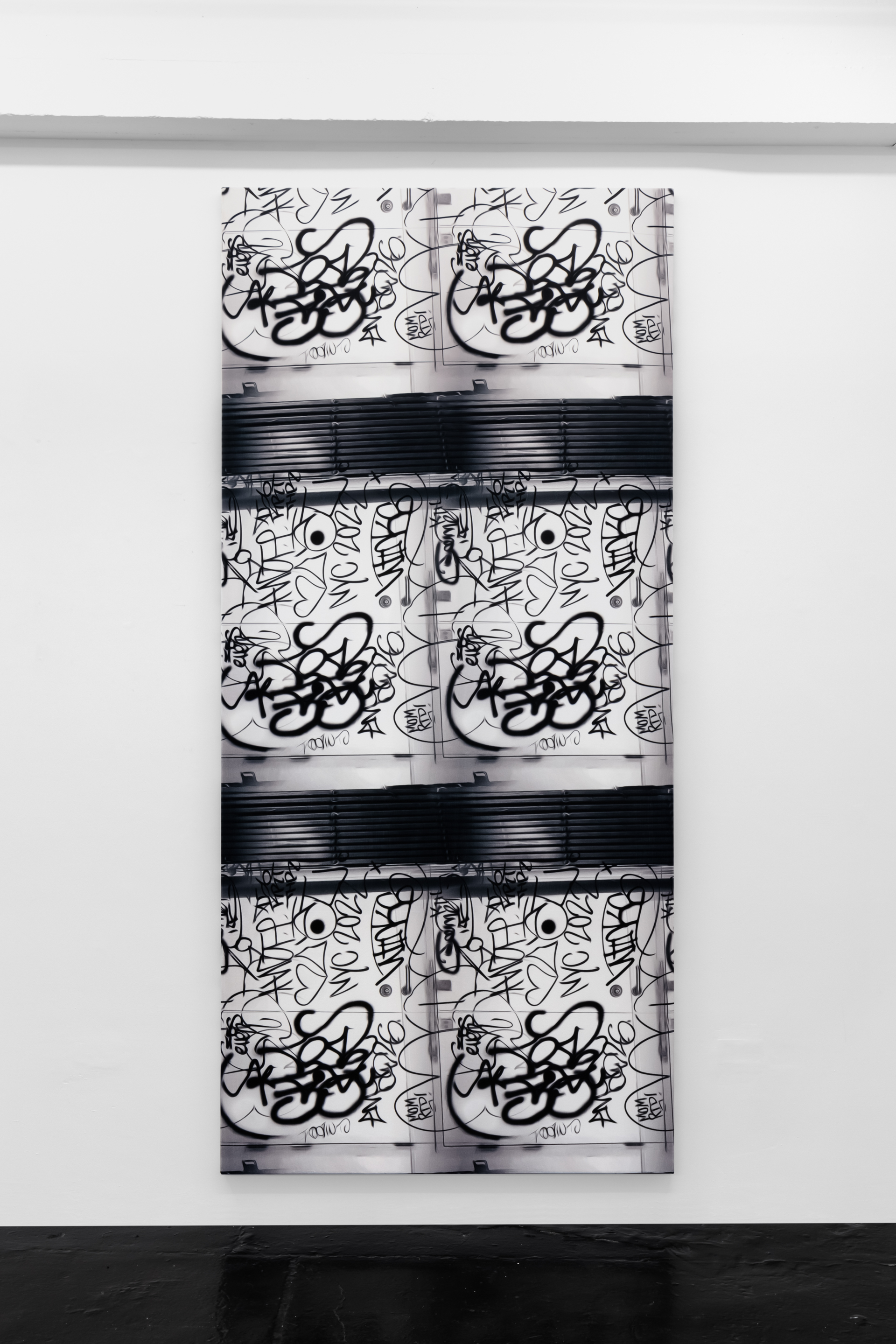







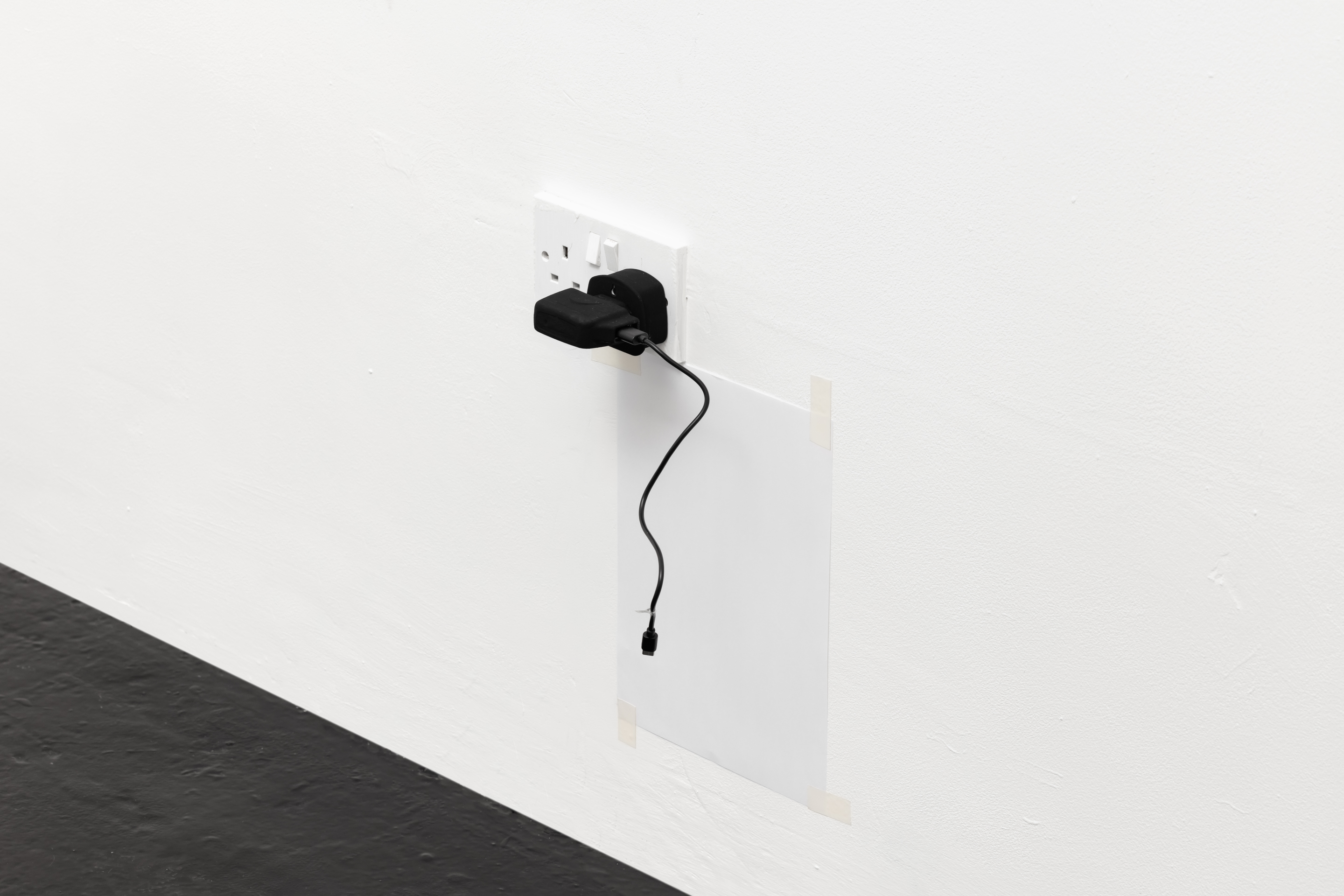




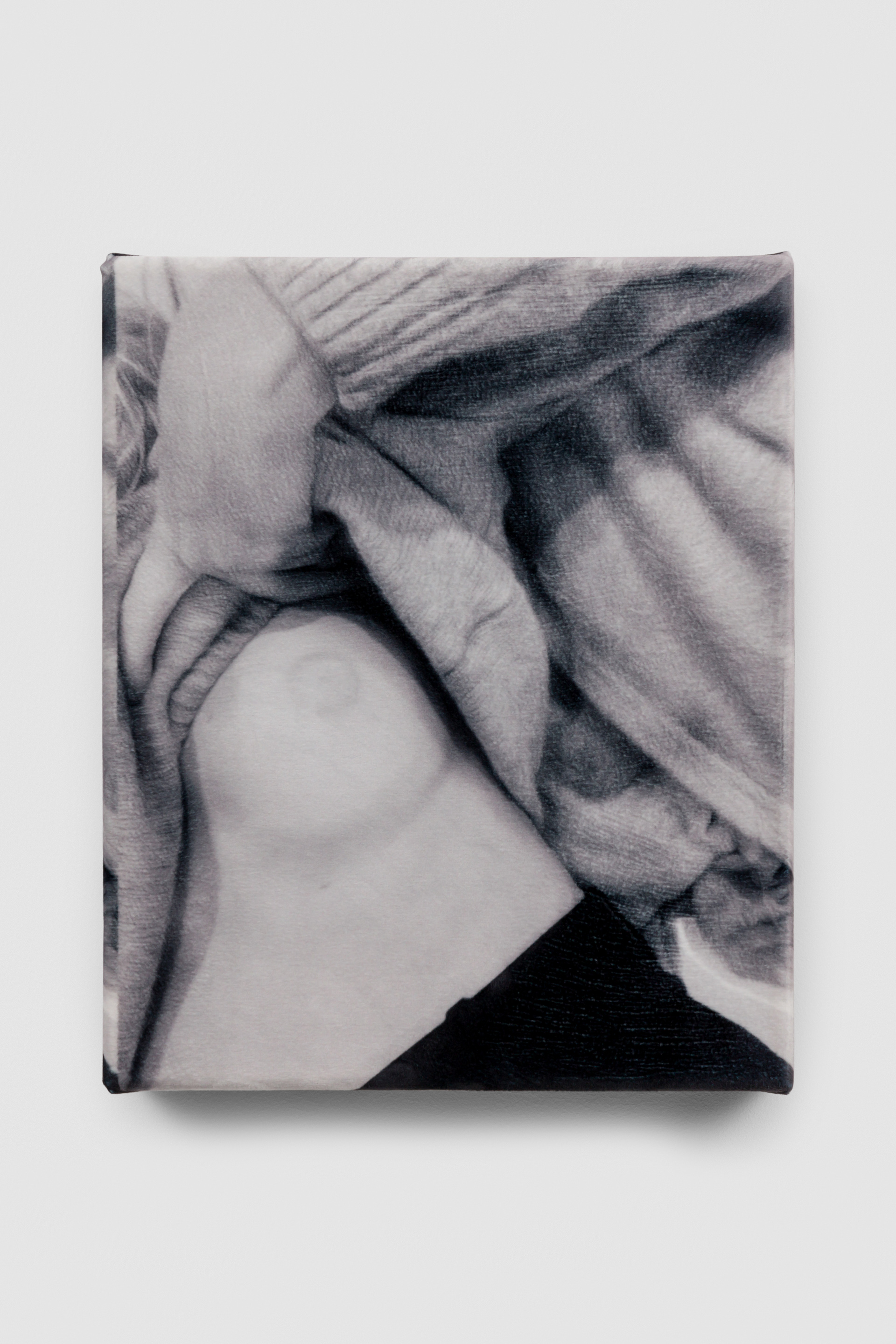







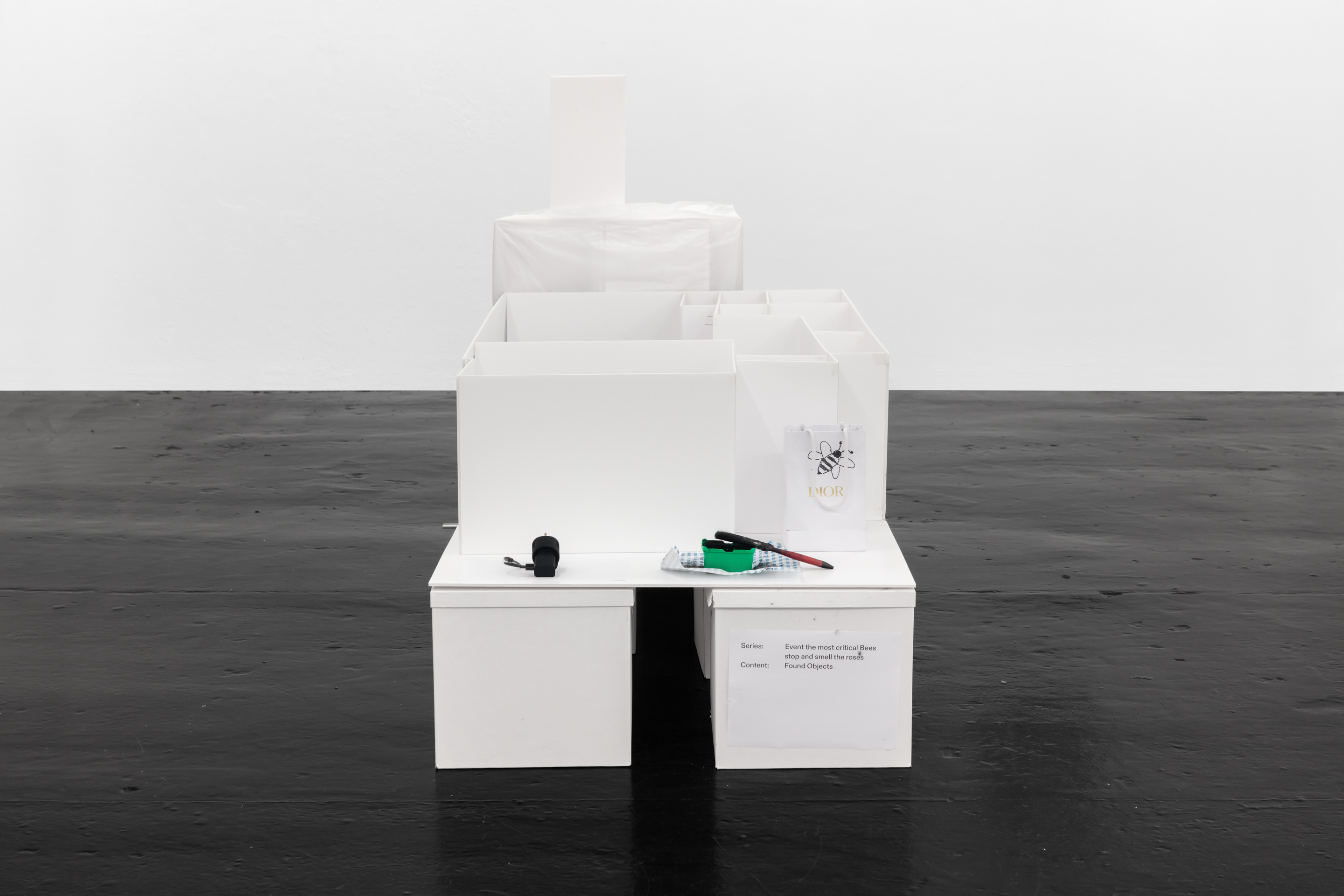








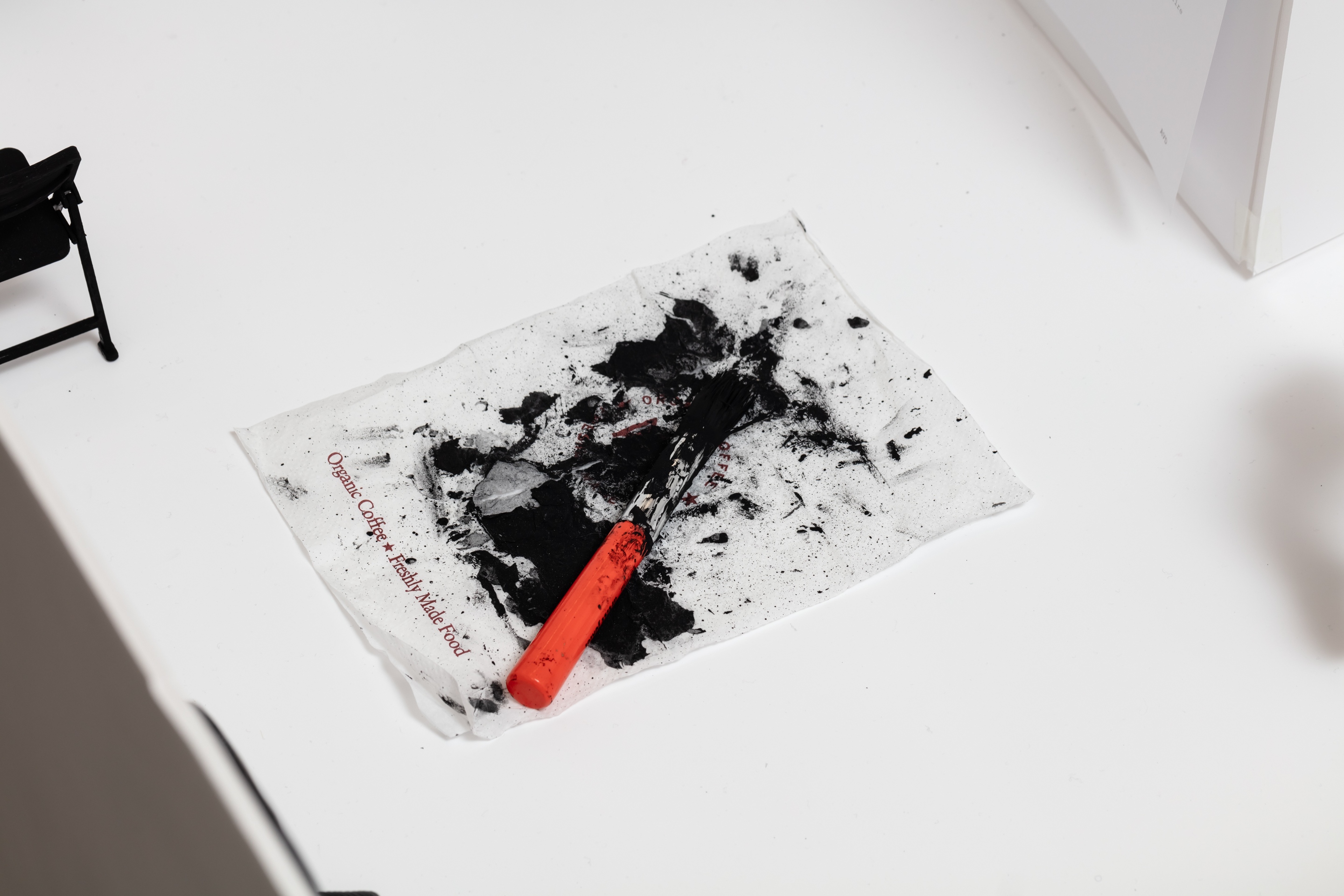


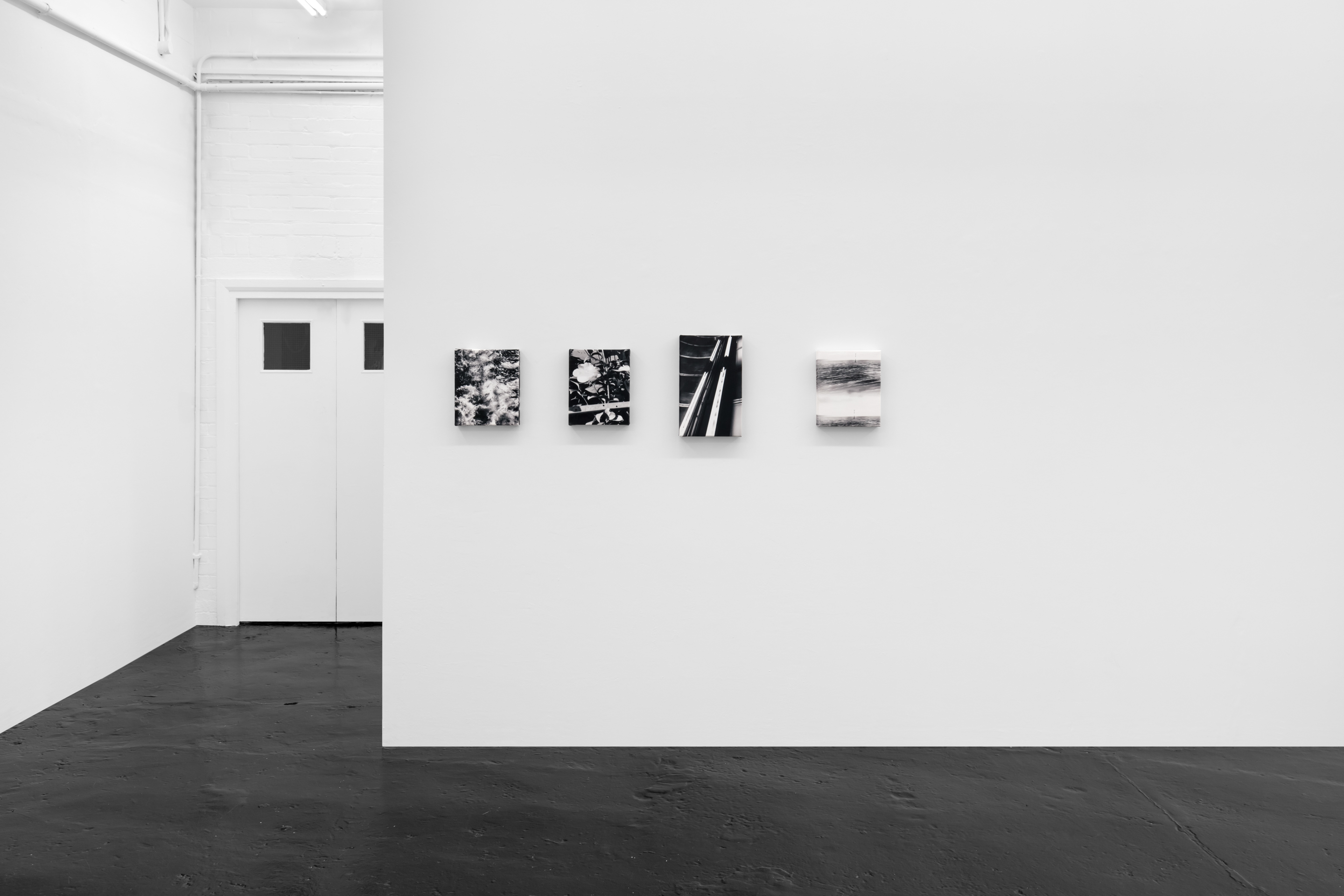
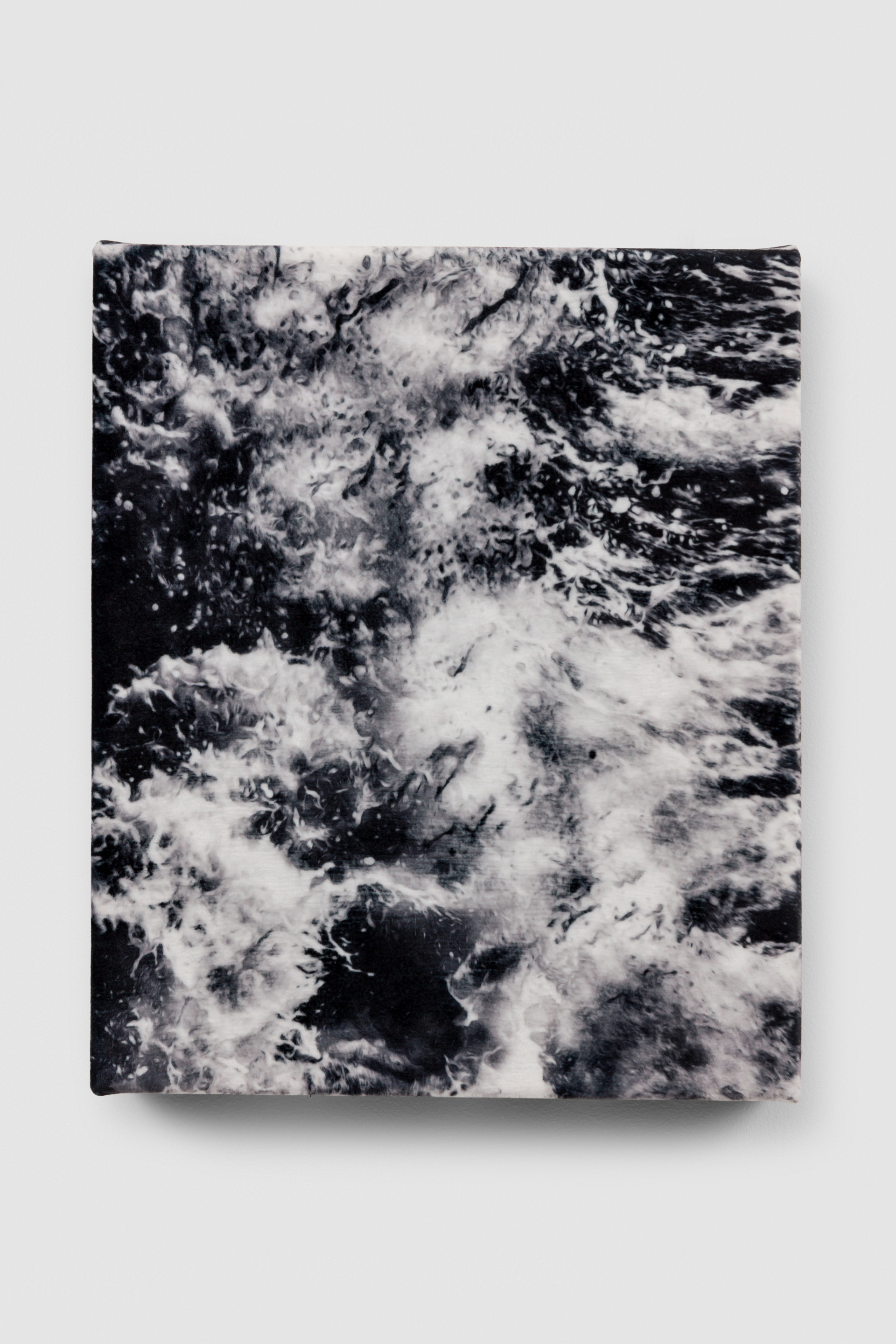

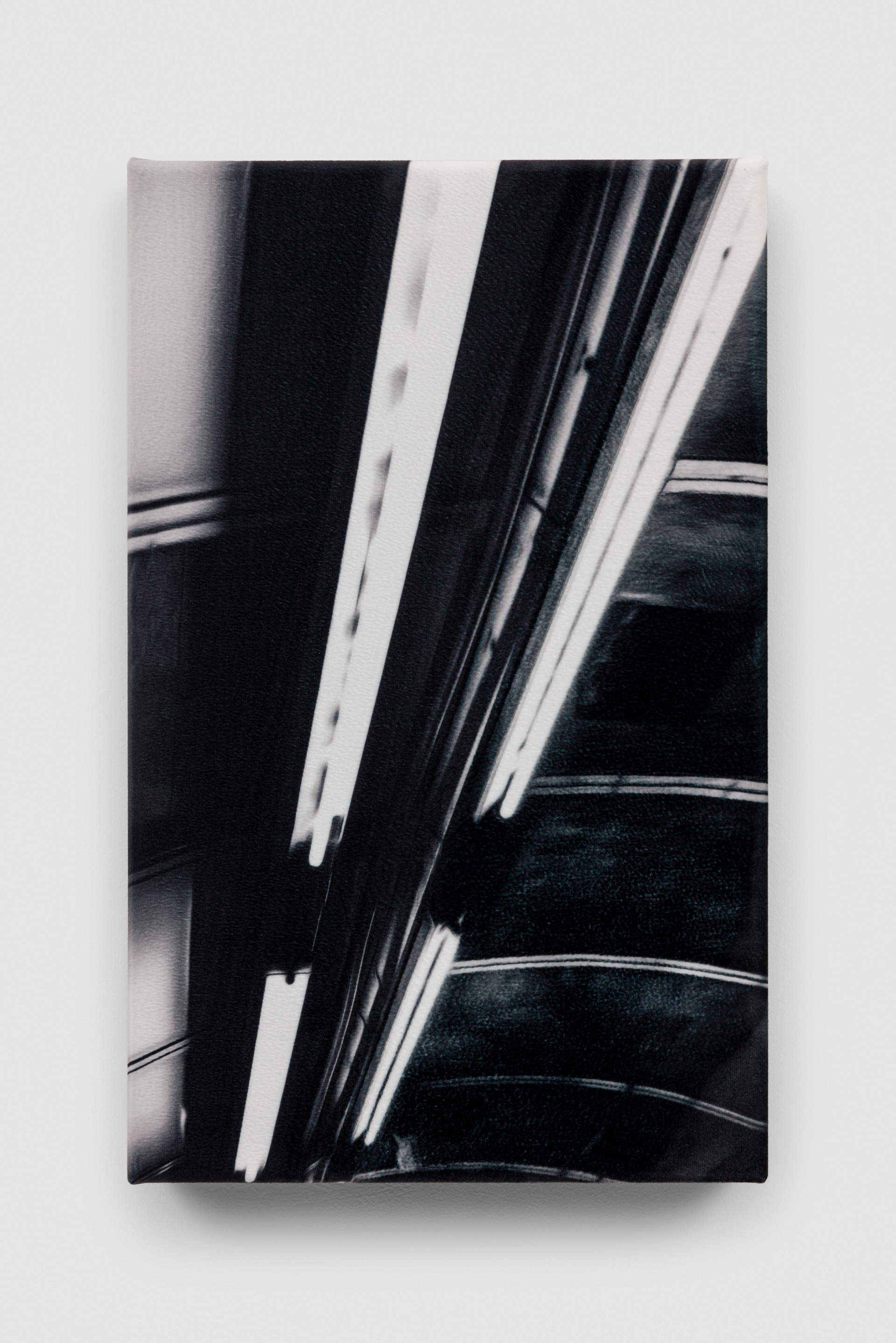
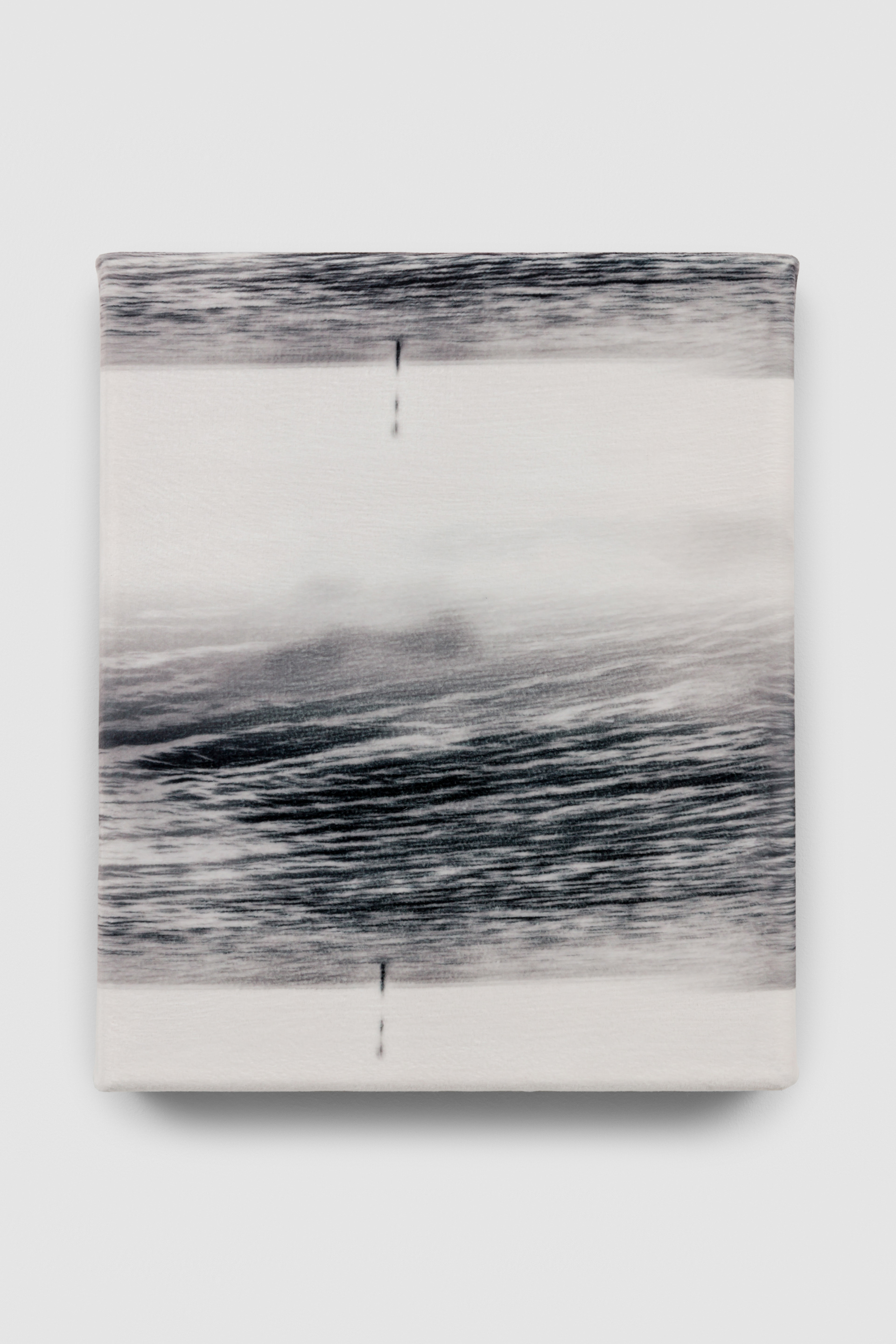


Analysing Bruce Nauman’s performance Slow Angle Walk (Beckett Walk, 1965), art historian Kathryn Chiong reminds us that ‘for a knock to be a knock, the sound must normally recur, the second proving that the first one was not just the banging of a branch but the work of communication’. Russian linguist Roman Jakobson also situates this operation in verbal behaviour, in which duplication signals that ‘the uttered sounds do not represent a babble, but a senseful, semantic entity’.
In Repetitive, her debut solo exhibition in the UK, London-based, German artist Ana Viktoria Dzinic presents a series of photographic prints and installations in which she uses repetition as a tool to investigate contemporary methods of communication and image production, analysing the relationship between processes of subjectivity formation and current modes of fabrication, circulation and consumption of technical images. Exploring tensions between the copy and the original, the authentic and the counterfeited, the exhibition begins with Even the most critical bees stop and smell the roses (2024), which was first shown in 2022, but this time downsized to a 1:25 maquette of the nicoletti gallery space, compremised of all the installation elements directed by Regieanweisungen (Scripts) allowing dzinic to use the object as representational models or signs, in this case: four chairs covered in the blackest black, coat hanegrs filled with one black item donated by each gallery member, 15 images of the Propaganda and decoration series ( 2022- ) printed on hane muehle german etching, and a soudtrack composed of 25 pinao cover songs played with devices made bfore 2007 ( when the first iPhone was released and the left over paint and tools which lead to the making of the objects.
Including a protocol to reproduce the work in different contexts, Dzinic’s installation also contains some of the images that are copied, resized and disseminated in Repetitive, which unfolds through a series of photographic prints featuring objects and motifs inspired by the concept of pace layering, which provides an analysis of civilisation as a superimposition of categories evolving at a different speed: from nature, culture and infrastructure up to the so-fast-it-becomes-impossible-to-track: fashion and technology. Taken with her phone during everyday mise en scenes.
From natural to technological, personal to commercial, Dzinic’s images conjure an intricate mixture of cringe, seduction and desuetude, ideas that are then alternatively emphasised or abstracted through editing procedures, whereby the original file is transformed from low-res .jpeg pixels to an ever expandable .svg vector ready to be duplicated, stretched and remodeled. Further processed with the first mainstream ‘black and white’ filter on mobile phones, Dzinic’s works form a rhythmic system based on patterns of repetition varying according to the size of the work, from suggested doubling to intensive multiplication. The resulting images are then transferred on velvet and mounted on canvas, taking the form of photographic paintings in which the artist plays with the tension between the austerity of mechanical reproduction and the sensuality of textile materials.
Within this framework, Dzinic uses repetition as an aesthetic and discursive device to examine the conditions whereby a picture becomes viral, the source of collective affect, or a symbol of obsolescence, questioning what she calls ‘the neurosis of authenticity’ via successive procedures of copying, pasting, repeating – a machine of syntactic production, no longer tied to the logic of indexical image making. In Repetitive, these ideas are furthered problematised by the display of another maquette that is also based on Nicoletti’s gallery space, in which the artist, this time, included all the original, non-edited images included in the exhibition.
Inspired by philosopher Vilèm Flusser’s analyses of the history of communication technology as a process of increasing abstraction, in which the ever-accelerating circulation of images and information leads to the production of sameness, Dzinic’s exhibition also contemplates the idea that signs and meanings are born out of their capacity to be repeated – a concept or an image existing and persisting in time only if it’s worthy of being learned or shown again. By extension, the artist reconsiders the importance given to notions of origin and authenticity, which are often the basis of hegemonic discourses on identity. Following Jacques Derrida’s description of repetition as not posterior to the origin but somehow simultaneous with it – ‘a trace which replaces a presence which has never been present’ –, Dzinic’s work ultimately invites us to acknowledge that the notion of autonomous origin is a lure, a fiction often serving the affirmation of power.